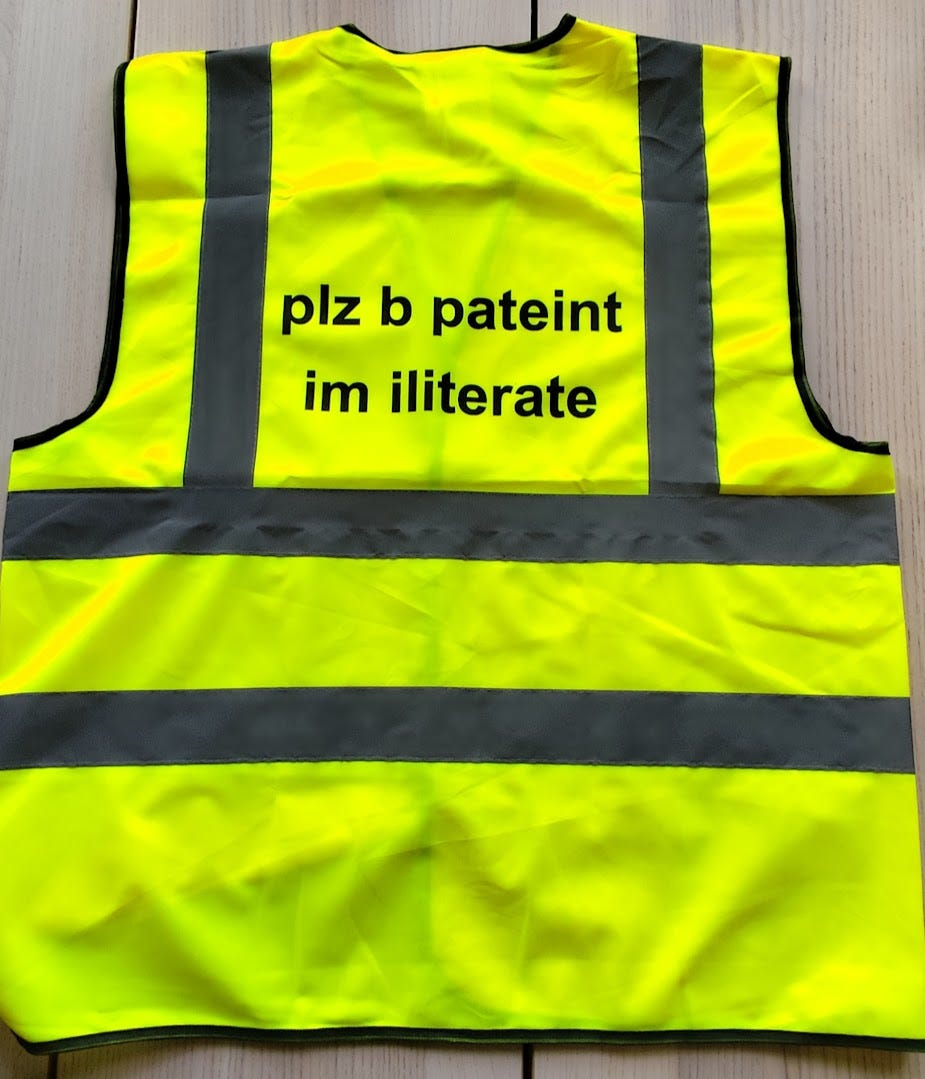Inside the Dark Ages of Blockchain Governance III
Far from transcending the flaws of human governance, blockchain networks have mirrored the very structures they sought to dismantle. Have we learned anything?
A three-part series reprising an unpublished book from 2017/8, and more recent pontifications on the state of protocol, community, power, and speculation. Resurrected with the help of thinking machines from the east.
Postcapitalist Experiments
Blockchain technology has been proposed as a possible experimental testbed frontier for postcapitalist experimentation by many, including myself. There has long been an anticipatory promise of new models of collaboration, value creation, and governance which can exist orthogonal to – or even contrary to – the hegemonic paradigms of financial capitalism. This utopian vision grasps for the Fisherian postcapitalist desire, going beyond the scarcity-based logics that underpin market-oriented systems, instead leveraging peer-to-peer networks to enact more equitable and sustainable forms of resource distribution.

The postcapitalist potential here lies in this technology paradigm’s capability to create trustworthy, transparent systems with a high degree of architectural shaping of technical, informational, economic, and socio-political stocks and flows. In principle, when these affordances are deployed carefully and responsibly, power and value can be distributed more equitably among participants and incentives structured so that collaborative and communal modes of togetherness achieve optimal outcomes, even for economically rational actors. However, as Mark Fisher litigates time and again in Capitalist Realism and Postcapitalist Desire (Zio-free links), the pervasive logic of capitalism often coopts and distorts even the most radical would-be alternatives. In the blockchain space, this is evident in the speculative dynamics within almost all tokenised networks, where the value of tokens is driven more by market factors and sentiment than by their underlying utility or social impact. This has led to the entire blockchain space – with the exception of Bitcoin and a very small handful of others – being populated by projects that prioritise short-term gains over long-term sustainability, often at the expense of their users and stakeholders. This dynamic reflects what Fisher referred to the "business ontology" of capitalism, where everything — including postcapitalist experiments — is reduced to a commodity to be bought and sold. It’s markets all the way down, in a race to the bottom.
As Fisher’s Capitalist Realism litigates, the real disappointment here is not one of system architecture, incentive design, or governance engineering. The issue with the rat’s maze is not that there is too little or too much cheese in it, it is that we have put the rats in a goddamned maze once again. The failure is one of imagination. As I have said many times onstage, we could be imagining and implementing systems with abundance at their core, instead of scarcity. We could be living in Star Trek, but instead we choose to live in Star Wars. And what does that say about blockchain man – it’s mostly men, after all – aka homo blockonomicus, and his blind spots? My recommendation to people who think they love blockchain is to read a book from time to time: the information junk food diet of podcasts is the equivalent of eating white bread and ready meals all day every day and wondering why you have diabetes and colon cancer. A load of old baloney, we might say. READ. A. DAMN. BOOK. (NON-FICTION). Every time I see a crypto-brained person with “*/acc” in their bio, that has not read even cursory material around 21st century extensions of continental philosophy regarding technology and capitalism, a part of me dies inside. We even wrote this stuff in a way that blockchain-brained thinkbois could understand, you can even read it on your phone, so why don’t you?
Despite these endless failures, there are occasional glimmers of postcapitalist potential in the blockchain space, beyond the carrot and the stick. Governance primitives like quadratic voting, dynamic reputation systems, and adversarial mechanisms offer new ways to mitigate plutocracy, avoid centralisation, and distribute power more equitably. However, Pierre Bourdieu’s concerns, despite being nothing new, should be heeded nonetheless: such systems risk creating new forms of cultural capital, where expertise and social networks become tools of exclusion. When you have a hammer, everything looks like a nail; but also, you have a hammer, and others don’t. Adversarial governance models, such as distributed arbitration platforms, embrace conflict as a feature rather than a bug. These systems institutionalise opposition, forcing elites to defend their decisions against structured critique in a gamification of conflict. Even adversarial systems are not immune to the dynamics of power and control.

As Fisher’s Postcapitalist Desire suggests, the path beyond capitalism requires not just new technologies but a fundamental reimagining of our social and economic systems. By Fisher’s lofty ideals, blockchain does not, and perhaps can never, meet this bar. Sixteen years into this experiment, the failures infinitely outweigh the successes. I am frankly too tired and embarrassed to name yet again the same handful of billionaire-funded “postcapitalist” experiments. One more time for those at the back, crypto billionaires funding your project is not radical, it is literally the same patronage model that has existed as the default mode of everything since at least the House of Medici in Florence. Again, Audrey Lorde:
“the master’s tool will never dismantle the master’s house. They may allow us temporarily to beat him at his own game, but they will never enable us to bring about genuine change”
In my opinion, the junction of blockchains and art has yielded the most honest and least disappointing applications, not least because art promises nothing more than it delivers. Further, in the hands of capable conceptual thinkers with understanding of the medium-specific affordances of the substrate, and the programming chops to bring together fragments from different technical, economic, and social approaches, crypto-art has been able to demonstrate in concept and in limited practical exemplifications, works which truly demonstrate the potential of blockchain-based experiments to run contrary to the entrenched logics of resource scarcity market-based price discovery. I always name the same few artists when asked to give examples here, and I should also say that these are friends and collaborators of mine, but they remain the best examples of pushing the limits of the medium to date. Sarah Friend’s OFF and Lifeforms — which I wrote a review of for the Taschen NFT book — Paul Seidler’s s̷̮͛t̶̳͝a̵̤̒y̸͓̌l̸͎̃i̸̹͗g̷̥̑ḫ̶͑t̵̬͠ ̵͈͝ṕ̷̗r̴̥͗o̷̝͂t̸̠͒ơ̴̪c̵̝̄o̶̜͝l̷͈͛, Nascent’s Timezone#4, Rhea Myers’ This Contract Is Art are a few good places to start. Monkey jpegs? Nein danke.

In my view, web3 is a failed state (machine), and this failure to realise the touted promise over such an extended period of time says volumes about both the calibre of people working on such technologies, the hyper-privatised and VC-dominated structure of this would-be industry, and the limitations of the technology paradigm itself, surely soon to be rendered obsolete by something altogether less constrained and backwards-working. What is worrying, from my view at least, is that this failure to launch is leading us down a dark path: the exit fantasies of concepts such as network states prove that a reactionary turn is underway in blockchain land, where, instead of reaching for alternatives beyond capitalism itself, we are instead witnessing a whiplash effect to the last few fruitless years of nihilist acceleration.
Blockchain’s Dark Enlightenment
One way out of blockchain’s Dark Ages is through the neoreactionary concept of the “dark enlightenment”, and reviewing the above it seems clear that the path that we are taking is not to any sunlit uplands of freedom and autonomy, but rather a regression towards aggression, sinking back into the swamp of self-interest and zero-sum thinking. This "dark enlightenment" of blockchain governance reveals a paradox at the heart of decentralised systems: the pursuit of egalitarian ideals often gives way to the re-emergence of hierarchical and anti-democratic structures. This phenomenon, which mirrors the inhuman(e) critiques of fascist thinkers such as Mencius Moldbug (Curtis Yarvin) and Nick Land, challenges the naive optimism that blockchain technology can inherently dismantle power imbalances. Instead, it implies that decentralised systems as, if not more, susceptible than incumbent approaches to the gravitational pull of human nature, where power tends to consolidate in the hands of a few, often under the guise of technical necessity or meritocratic legitimacy.

Moldbug’s critique of democracy, rooted in his belief that such systems inevitably lead to inefficiency and corruption, finds an unsettling parallel in blockchain governance. While tokenised networks are often celebrated for their democratic potential — for example, through enabling collective decision-making through on-chain voting and DAOs — the reality is frequently more authoritarian than egalitarian. In all crypto networks that one cares to examine – and I have examined dozens over the course of this decade-long survey – power has concentrated in the hands of early adopters, developers, and wealthy stakeholders, creating de facto oligarchies. These systems, far from being democratic, often resemble what Moldbug might call “patchworks” of competing power centres, where governance is dominated by those with the most resources or technical expertise. The result is the priory mentioned "decentralisation theatre," where the appearance of participation masks the reality of centralised control.
Nick Land’s accelerationist philosophy, with its emphasis on the inevitable supremacy of technological and capitalist forces, offers another lens through which to view today’s dark enlightenment of blockchain governance. Land’s vision of a posthuman, hypercapitalist future, where traditional social and political structures are dissolved by the relentless logic of the market, finds echoes in the speculative frenzy of token networks: new frontiers of financialisation, where value is abstracted and commodified to an unprecedented degree. As Land might argue, this reductio ad absurdum of capitalist logics does not lead to liberation but to new forms of domination, where the winners are those who can navigate and exploit the system most effectively. In blockchain networks, this often means early adopters, venture capitalists, and developers, who wield disproportionate influence over protocol evolution, network governance, and resource allocation.
The dark enlightenment of blockchain governance thus reveals a sobering truth: the tools of decentralisation can easily become instruments of centralisation, and the rhetoric of egalitarianism can obscure the reality of hierarchy. For the “Dork Enlightenment” thinkers, this is not a (Mold)bug but a feature of human systems, where power inevitably coalesces around those who can most effectively wield it. Those who have not yet abandoned hope for this technology, must not deny this reality but to confront it head-on, designing systems that account for the human propensity for power accumulation and exploitation. This requires a shift away from the pervasive naïveté of blockchain techno-utopianism, towards pragmatic and critical approaches that recognises the limits of technology and the unconscious drives of human nature.

What’s Left?
With its promises of decentralisation, transparency, and equitable resource distribution, blockchain presents a tantalising opportunity for the political left to reimagine economic and social systems beyond the constraints of traditional capitalism. As the preceding arguments have illustrated, the reality of blockchain governance is often a far cry from its utopian ideals. From the formation of cartels and feudal hierarchies to the speculative frenzy that drives many token networks, the blockchain space has frequently replicated the very systems it seeks to dismantle. For the political left, this raises a critical question: what is left to salvage, and how can blockchain technology be harnessed to advance a postcapitalist agenda?
The first step for the left is to confront the contradictions and failures of blockchain governance head-on. As Mark Fisher argued in Capitalist Realism, the pervasive logic of capitalism often co-opts even the most radical alternatives, reducing them to marketable commodities. In the blockchain space, this is evident in the speculative nature of token networks, where the rhetoric of decentralisation and community empowerment is often overshadowed by the pursuit of profit. To move beyond this, the left must advocate for governance models that prioritise long-term value creation and social impact over short-term financial gains. This means challenging the dominance of speculative behaviour and designing systems that reward participation, contribution, and collective well-being rather than wealth accumulation.
Experimental governance models like quadratic voting, reputation systems, and adversarial mechanisms offer promising avenues for mitigating centralisation and distributing power more equitably. Quadratic voting, for instance, dilutes the influence of large token holders, creating a more inclusive decision-making process. Reputation systems, which allocate governance power based on contributions rather than token ownership, could help shift the focus from capital to merit. Adversarial governance models, which institutionalise dissent and critique, could ensure that power is continually contested and held accountable. However, as Michel Foucault cautioned, these systems are not immune to the dynamics of power and control. The left must remain vigilant against the emergence of new hierarchies and ensure that these mechanisms are transparent, inclusive, and resistant to capture.
Most importantly, the left must engage in a broader cultural and ideological struggle to redefine the values and priorities of the blockchain space. The Adornian critique holds: the tools of emancipation can easily become the instruments of domination if they are not accompanied by a critical awareness of power and ideology. The left must challenge the techno-utopian narratives that dominate the blockchain space, exposing the ways in which they obscure power dynamics and perpetuate inequality, not failing short with milquetoast and reformist rhetoric accompanying capitalist modes of being and doing. This requires a commitment to education and awareness-raising, empowering users and stakeholders to critically engage with the systems they participate in.
In conclusion, what is left for the political left in the blockchain space is both a challenge and an opportunity. The challenge lies in confronting the contradictions and failures of blockchain governance, from the speculative frenzy that drives many token networks to the emergence of new hierarchies and inequalities. The opportunity lies in harnessing the potential of blockchain technology to create more equitable, sustainable, and inclusive systems of governance. By advocating for experimental governance models, addressing the ethical and environmental implications of blockchain technology, and engaging in a broader cultural and ideological struggle, the left can help shape a future that moves beyond the logics of capitalism and towards a truly postcapitalist horizon. The road ahead is fraught, but it is not impassable. As Fisher might suggest, the first step is to imagine genuinely radical alternatives — not yet more VC and billionaire-funded reformist slop — and then to build them. So, after 16 years of Bitcoin, and over a decade of Ethereum, where are they?




